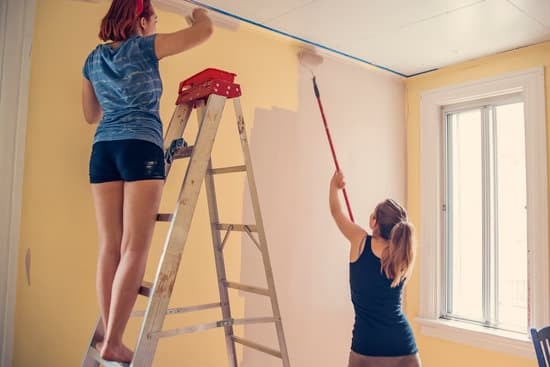Are you asking yourself, “How do I finance home improvements?” Regardless of the size or scope of your home improvement projects, finding the right financing option is crucial to achieving your goals. Whether you’re looking to remodel your kitchen, upgrade your bathroom, add a new room, or make energy-efficient upgrades, understanding how to finance these projects is essential for successful completion.
Home improvement projects not only enhance the functionality and aesthetics of your home but can also increase its overall value. With proper financing, you can take on these projects with confidence and achieve the home of your dreams. This article will guide you through the various financing options available for home improvements and help you make informed decisions about selecting the right one for your needs.
Assessing your financing options is an important first step in the process. By comparing personal loans, home equity loans, and specific home improvement loans, you can determine which option best fits your situation. Creating a budget for your project will help you understand the cost and funding needed. It’s also important to explore interest rates and eligibility requirements associated with different financing options.
Additionally, we’ll cover tips for managing payments and guide you through applying for financing step by step. And finally, we’ll discuss alternative options such as grants, rebates, and tax incentives that may be available to support your home improvement projects. Stay tuned to learn more about making informed decisions when it comes to financing your home improvements.
Assessing Your Financing Options
When it comes to financing home improvement projects, there are several options available to homeowners. It’s important to compare the different types of financing in order to determine which option best suits your needs and financial situation.
Here are some common financing options for home improvement projects:
- Personal Loans: Personal loans are unsecured loans that can be used for a variety of purposes, including home improvements. These loans typically have fixed interest rates and repayment terms, making it easier to budget for your project. However, personal loans may have higher interest rates compared to other types of financing.
- Home Equity Loans: A home equity loan allows homeowners to borrow money using the equity in their home as collateral. These loans often have lower interest rates compared to personal loans, making them an attractive option for larger home improvement projects. However, it’s important to remember that using your home as collateral means the risk of foreclosure if you fail to make timely payments.
- Home Improvement Loans: Some lenders offer specialized loans specifically designed for home improvement projects. These loans may come with lower interest rates and longer repayment terms compared to personal loans or home equity loans. However, eligibility requirements for these types of loans may be stricter, and not all lenders offer them.
Before deciding on a financing option for your home improvement project, it’s important to carefully assess your financial situation and consider the pros and cons of each type of loan. By comparing personal loans, home equity loans, and home improvement loans, you can make an informed decision that aligns with your budget and goals.
Creating a Budget
The first step in creating a budget for your home improvement project is to itemize all the expenses associated with the renovation. This includes the cost of materials such as paint, flooring, fixtures, and any tools or equipment needed for the project.
Additionally, you will need to factor in labor costs if you plan on hiring professionals for any part of the renovation. It’s important to research and gather estimates from multiple sources to ensure that you have an accurate understanding of the total cost.
Once you have determined all potential expenses, it is crucial to set aside extra funds for unexpected costs that may arise during the course of your home improvement project. It is not uncommon for unforeseen issues to come up during renovations, so having a contingency fund can provide peace of mind and financial security throughout the process.
| Expense | Estimated Cost |
|---|---|
| Materials | $5,000 |
| Labor | $3,000 |
| Contingency Fund | $2,000 |
Determining these costs will help guide your financing decisions when considering options such as personal loans, home equity loans, or home improvement loans. By having a clear understanding of how much funding you need before seeking financial assistance, you can make more informed choices about which type of financing best suits your situation.
Ultimately, by carefully creating a comprehensive budget for your home improvement project early on in the process-you are better equipped to make well-informed decisions about financing options and ensuring that you have enough resources to complete your renovation successfully.
Understanding Interest Rates
When it comes to financing home improvement projects, understanding interest rates is crucial. The interest rate on your loan will have a significant impact on the overall cost of your project, so it’s important to explore how different interest rates can affect your financing options.
Fixed vs. Variable Interest Rates
One of the first things to consider when looking at financing options for home improvements is whether you prefer a fixed or variable interest rate. A fixed interest rate will remain the same throughout the life of the loan, providing stability and predictability in your monthly payments. On the other hand, a variable interest rate may start lower but has the potential to fluctuate over time, which could lead to higher payments down the road.
Impact on Total Loan Costs
Before deciding on a financing option, it’s important to carefully calculate and compare the total costs of each loan based on their respective interest rates. A seemingly small difference in interest rates can add up to significant cost differences over the term of the loan. Understanding how these rates impact the total amount you’ll end up paying back is essential in making an informed decision about which financing option is best for your home improvement project.
Credit Score and Interest Rates
Your credit score also plays a significant role in determining the interest rate you’ll be offered for a home improvement loan. Lenders typically reserve their lowest interest rates for borrowers with excellent credit scores, while those with lower scores may be offered higher rates or face difficulty qualifying for certain loans altogether.
It’s essential to know how your credit score impacts your potential interest rate and what steps you can take to improve your score before applying for financing.
Understanding how different interest rates can impact your financing options is essential in making informed decisions about how to finance home improvements. Whether you’re considering fixed vs. variable rates, calculating total loan costs, or working on improving your credit score, taking these factors into account will help you secure the best possible financing for your home improvement project.
Eligibility Requirements
When it comes to financing home improvements, it’s important to understand the eligibility requirements for different types of financing options. Whether you’re considering a personal loan, home equity loan, or a specific home improvement loan, each option will have its own set of eligibility criteria that you must meet in order to qualify for funding.
Personal loans typically require a good credit score and stable income in order to qualify. Lenders will also look at your debt-to-income ratio and employment history. On the other hand, home equity loans require you to have significant equity in your home, as this serves as collateral for the loan. Additionally, lenders will consider your credit history and income when determining eligibility.
For specific home improvement loans, such as FHA Title 1 loans or energy-efficient mortgages, eligibility requirements may vary. These programs are often geared towards specific types of improvements or borrowers with certain financial circumstances. You may need to meet income limits or demonstrate the ability to repay the loan in order to qualify.
Regardless of the type of financing you choose, it’s important to review the eligibility requirements carefully before applying. Understanding what lenders are looking for can help you prepare and improve your chances of being approved for the funding you need for your home improvement project.
Applying for Financing
Evaluating Your Financial Situation
Before you start applying for financing for your home improvement project, it’s important to evaluate your current financial situation. Take a look at your income, expenses, and existing debt to determine how much you can realistically afford to borrow.
Consider factors such as your credit score, employment status, and assets when assessing your financial stability. Understanding your financial position will not only help you narrow down your financing options but also give you a clear idea of what you can comfortably pay back.
Researching Lenders and Loan Products
Once you have a clear understanding of your financial standing, the next step is to research different lenders and loan products available in the market. Compare interest rates, terms, and eligibility requirements from various financial institutions to find the best fit for your needs.
Look into banks, credit unions, online lenders, or even government-backed loan programs that specialize in home improvement financing. Each lender may have different qualifications and application processes so take the time to thoroughly review and compare each option.
Preparing Your Documentation and Application
After narrowing down potential lenders and loan products, it’s time to gather all the necessary documentation for the application process. Typically, this will include proof of income, employment verification, credit history, and details about the home improvement project such as estimates or contractor information.
Be sure to carefully complete all required forms and provide accurate information to avoid any delays in the approval process. Once everything is in order, submit your application with supporting documentation to begin the evaluation process.
By following these steps in applying for financing for your home improvement project, you will be well-prepared when seeking funding from various sources. This careful approach will ensure that you make informed decisions about securing the best funding option suitable for your needs.
Managing Your Payments
Once you have secured financing for your home improvement project, it is important to effectively manage your payments to ensure that your loan remains in good standing. Failing to make timely payments can result in penalties, fees, and a negative impact on your credit score. Therefore, it is essential to budget wisely and stay organized when it comes to managing your loan payments.
One effective way to manage your payments is to create a detailed budget that outlines all of the costs associated with your home improvement project. This should include not only the cost of materials and labor, but also account for potential unexpected expenses that may arise during the course of the project. By having a comprehensive budget in place, you can more effectively plan for and allocate funds towards making timely loan payments.
In addition to creating a budget, another important tip for managing your payments is to set up automatic payments whenever possible. Many lenders offer the option to automatically deduct your loan payment from your bank account each month. This can help ensure that you never miss a payment and may even make you eligible for lower interest rates or other benefits from your lender.
| Tips | Details |
|---|---|
| Create a Detailed Budget | Outline all costs associated with the project including unexpected expenses |
| Set Up Automatic Payments | Enroll in automatic payment options offered by lenders |
Considering Alternative Options
When considering home improvement projects, it’s important to explore all potential avenues for financing. In addition to personal loans, home equity loans, and home improvement loans, homeowners may also qualify for grants, rebates, and tax incentives that can help offset the costs of their projects. These alternative options can provide valuable financial relief and make home improvements more affordable.
Grants are a form of financial assistance that doesn’t need to be repaid. They are often offered by government agencies or non-profit organizations and may be available for specific types of home improvement projects, such as energy efficiency upgrades or accessibility modifications for individuals with disabilities. Similarly, rebates are a type of refund offered by manufacturers or utilities as an incentive for purchasing certain products or making eco-friendly improvements to your home.
In addition to grants and rebates, there may also be tax incentives available for certain types of home improvement projects. For example, homeowners who make energy-efficient upgrades such as installing solar panels or upgrading their HVAC system may be eligible for federal tax credits. It’s important to research and understand the eligibility requirements and application processes for these alternative financing options in order to maximize savings on your home improvement projects.
Conclusion
In conclusion, financing home improvements requires careful consideration and planning. It is essential to weigh the pros and cons of different financing options such as personal loans, home equity loans, and home improvement loans to determine which one best suits your needs. Understanding the impact of interest rates on your financing options is also crucial in making informed decisions.
Creating a budget for your home improvement project is vital to ensure that you can afford the necessary renovations. By determining the costs involved, you can better assess how much financing you will need and which type of loan or funding option is most suitable for your situation.
Additionally, it’s important to explore alternative options such as grants, rebates, and tax incentives for home improvement projects. These can help offset some of the costs associated with renovations and may make financing more manageable. Ultimately, by following a step-by-step guide to securing funding for your project and managing your payments responsibly, you can achieve your home improvement goals while staying within your financial means.
With this information in mind, you can confidently answer the question “how do I finance home improvements? “.
Frequently Asked Questions
What Is the 30 Rule for Renovations?
The 30 rule for renovations is a guideline suggesting that homeowners should spend no more than 30% of their home’s current market value on renovations. This rule helps ensure that the costs of renovations don’t exceed the potential increase in property value.
What Is a Home Improvement Loan Called?
A home improvement loan is commonly referred to as a “home improvement personal loan” or a “home renovation loan.” These loans are specifically designed to help homeowners fund improvements, repairs, or remodels in their homes and typically have fixed interest rates.
Is It Better to Pay Cash or Finance Home Improvements?
Whether it’s better to pay cash or finance home improvements depends on various factors such as the cost of the project, available funds, and current interest rates. Paying cash can save on interest payments, while financing allows for larger projects without depleting savings.

I’m thrilled to have you here as a part of the Remodeling Top community. This is where my journey as an architect and remodeling enthusiast intersects with your passion for transforming houses into dream homes.





